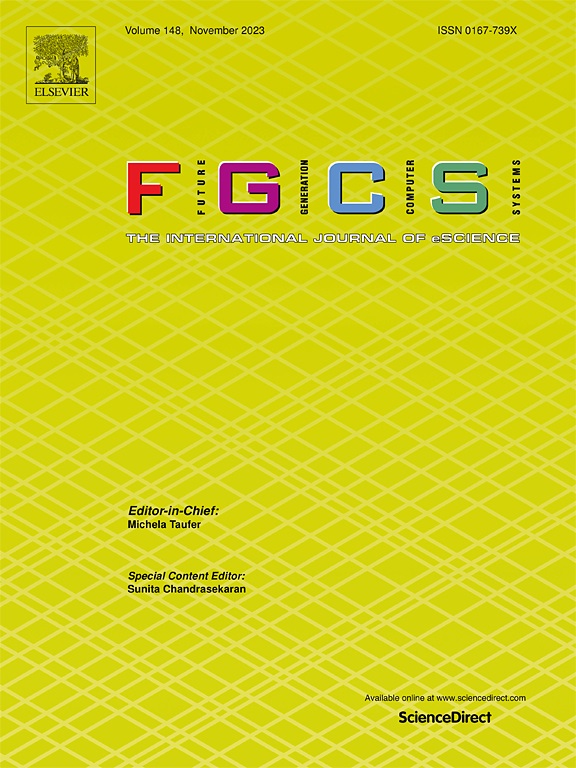CMPNet: A cross-modal multi-scale perception network for RGB-T crowd counting
IF 6.2
2区 计算机科学
Q1 COMPUTER SCIENCE, THEORY & METHODS
Future Generation Computer Systems-The International Journal of Escience
Pub Date : 2024-11-06
DOI:10.1016/j.future.2024.107596
引用次数: 0
Abstract
The cross-modal crowd counting method demonstrates better scene adaptability under complex conditions by introducing independent supplementary information. However, existing methods still face problems such as insufficient fusion of modal features, underutilization of crowd structure, and the neglect of scale information. In response to the above issues, this paper proposes a cross-modal multi-scale perception network (CMPNet). Specifically, CMPNet mainly consists of a cross-modal perception fusion module and a multi-scale feature aggregation module. The cross-modal perception fusion module effectively suppresses noise features while sharing features between different modalities, thereby significantly improving the robustness of the crowd counting process. The multi-scale feature aggregation module obtains rich crowd structure information through a spatial context aware graph convolution unit, and then integrates feature information from different scales to enhance the network’s perception ability of crowd density. To the best of our knowledge, CMPNet is the first attempt to model the crowd structure and mine its semantics in the field of cross-modal crowd counting. The experimental results show that CMPNet achieves state-of-the-art performance on all RGB-T datasets, providing an effective solution for cross-modal crowd counting. We will release the code at https://github.com/KunChenKKK/CMPNet.
CMPNet:用于 RGB-T 人群计数的跨模态多尺度感知网络
跨模态人群计数方法通过引入独立的补充信息,在复杂条件下表现出更好的场景适应性。然而,现有方法仍面临模态特征融合不足、人群结构利用不足、尺度信息被忽视等问题。针对上述问题,本文提出了一种跨模态多尺度感知网络(CMPNet)。具体来说,CMPNet 主要由跨模态感知融合模块和多尺度特征聚合模块组成。跨模态感知融合模块可有效抑制噪声特征,同时共享不同模态之间的特征,从而显著提高人群计数过程的鲁棒性。多尺度特征聚合模块通过空间上下文感知图卷积单元获取丰富的人群结构信息,然后整合不同尺度的特征信息,增强网络对人群密度的感知能力。据我们所知,CMPNet 是在跨模态人群计数领域首次尝试建立人群结构模型并挖掘其语义。实验结果表明,CMPNet 在所有 RGB-T 数据集上都达到了最先进的性能,为跨模态人群统计提供了有效的解决方案。我们将在 https://github.com/KunChenKKK/CMPNet 发布代码。
本文章由计算机程序翻译,如有差异,请以英文原文为准。
求助全文
约1分钟内获得全文
求助全文
来源期刊
CiteScore
19.90
自引率
2.70%
发文量
376
审稿时长
10.6 months
期刊介绍:
Computing infrastructures and systems are constantly evolving, resulting in increasingly complex and collaborative scientific applications. To cope with these advancements, there is a growing need for collaborative tools that can effectively map, control, and execute these applications.
Furthermore, with the explosion of Big Data, there is a requirement for innovative methods and infrastructures to collect, analyze, and derive meaningful insights from the vast amount of data generated. This necessitates the integration of computational and storage capabilities, databases, sensors, and human collaboration.
Future Generation Computer Systems aims to pioneer advancements in distributed systems, collaborative environments, high-performance computing, and Big Data analytics. It strives to stay at the forefront of developments in grids, clouds, and the Internet of Things (IoT) to effectively address the challenges posed by these wide-area, fully distributed sensing and computing systems.

 求助内容:
求助内容: 应助结果提醒方式:
应助结果提醒方式:


